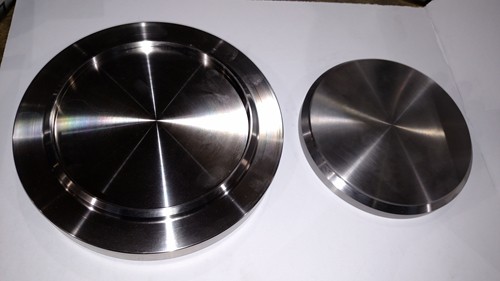Designing a shell and tube heat exchanger involves many decisions that must be made carefully and intentionally. One crucial choice that’s important to every exchanger is the material from which it’s made.
Engineers have a wide variety of options when choosing the right material from which to build a shell and tube heat exchanger. Steels and alloys come in various compositions, each with their own unique properties, benefits and disadvantages.
What makes one material more suited for an exchanger over another largely depends on how the equipment will be used – including what chemicals will be introduced to it, the temperature and pressure settings it will be subjected to, and what kind of environment it will be housed in. In addition, the composition material must be cost-effective and easily acquired by the manufacturer.
Many manufacturers find duplex stainless steel to be an ideal material for shell and tube heat exchangers in a wide variety of industries, including the pharmaceutical, oil and gas and biotechnology industries. Duplex stainless steels are composed of ferrite and austenite, and thus can withstand high-stress applications.
Ferrite and austenite
Stainless steels come in many forms. Austenitic stainless steels are the most popular, as they are the most versatile. They are very weldable, according to the American Welding Society, but they do have a tendency to crack when overheated or under too much pressure.
“Duplex stainless steels can withstand high stress applications.”
Ferritic stainless steels are another good option for a variety of applications. Though they aren’t as durable as austenitic steels, they have high resistance to corrosion and are fairly formable, making them a versatile solution.
When combined to create duplex stainless steel, the best properties of both the austenite and ferrite come out. Austenite lends its strength while ferrite resists corrosion and cracking.
Duplex stainless strength
Since duplex stainless steels are so strong, engineers have found they can reduce the weight and thickness of materials made from it while still maintaining durability and corrosion resistance. According to Process Heating, duplex stainless steels usually have double the strength of austenite stainless steel. Thinner tubes mean less material is needed, reducing the building cost of the equipment. The exchanger may also be able to be more efficient because of the lower weight.
In addition to having a strong, efficient exchanger, manufacturers seek out those that can resist corrosion best. Corroded or pitted tubes become weak in time and can eventually spring a leak. A cracked tube is never a good thing, and can cause:
- Fouling
- Cross contamination
- Damaged tube sheets, shells or other important features of the exchanger.
Damaged tubes are also difficult and expensive to replace.
Corrosion can occur anytime a substance is introduced to the exchanger that naturally reacts with the chemical composition of the tubes or shell. Chlorine is a common cause of pitting, and can be a major concern for manufacturers operating in a chlorine-heavy environment with an austenite stainless steel heat exchanger. Duplex stainless steels, on the other hand, resist the ill effects of chlorine well and are sought after in industries that work with chlorine frequently.
Duplex stainless steels’ ability to withstand high temperatures also make them a prime choice for shell and tube heat exchangers. When chloride and tensile stresses are both at play, it only takes a temperature of 150 degrees Fahrenheit to endanger austenitic stainless steel, according to the International Molybdenum Association. When duplex stainless steels are in use, however, temperatures can rise to around 250 degrees before they become risky.Rouging is another problem that some industries need to fend off. Rouging refers to the oxygenation of the metal, represented through a rainbow of colors including red, blue, gold, gray and dark brown. However, IMOA noted that the causes of rouging aren’t always completely understood, but can be greatly affected by the grade of steel equipment is made from.
When rouging builds up on equipment in the pharmaceutical and biotechnology industries, it’s imperative that it gets cleaned to prevent product contamination. The biggest challenge in this is the time and money that goes into this process. Choosing a rouging-resistant material to build equipment is ideal. IMOA explained that the 316L grade of austenitic stainless steel is a favorite among the pharmaceutical industry because it is resistant to rouging to a certain extent. However, duplex stainless steel has also been found to be just as resistant to it, if not more so.
Cost benefits
In addition to information about how well one alloy performs in operation compared to another, manufacturers also need to know whether the material is available to them, how difficult it is to obtain it and how much it costs. Process Heating noted that duplex stainless steels have lower nickel and molybdenum contents compared to austenitic stainless steels, bringing down their price point. It also protects the alloy from a volatile raw materials market, which can cause alloy and metal prices to swing upward dramatically at times.
“Lower nickel and molybdenum contents bring down the price point of duplex stainless steel.”
Additionally, since the stronger duplex stainless steel can be made durable with less material than an austenitic or ferritic steel, the cost to build it can be reduced.
Manufacturers also need to look at cost comparisons over the long term. For example, a material that costs less upfront but has weak properties will eventually cost more in the long run through maintenance and replacement costs. Since duplex stainless steel can stand up to higher temperatures and pressures, as well as more corrosive materials, than austenitic or ferritic stainless steels, less maintenance would theoretically be needed to keep the exchanger in working order.
Using equipment that is made from the proper elements is crucial to having a healthy and productive manufacturing operation. If you’re in the market for a long-lasting shell and tube heat exchanger,
speak to the engineers at Enerquip, where we’ll be able to identify the best materials and configuration for your operation.

